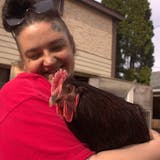Buying binoculars can seem complicated, but it needn't be so. Most birders will find their needs and desires fitting comfortably in the middle ranges of function and price.
For information I turned to Kevin Smythe, optics buyer for National Camera Exchange. I have purchased several pairs of binoculars from Smythe, plus two spotting scopes.
I spoke with him because he understands my needs as a birder. I can deal face-to-face with him or other National Camera staff members. I can hold and try binoculars before I buy them. I could return the binoculars within 30 days if I change my mind. I trust the company.
There are other places to buy the same products. Just be certain that your salesperson understands your needs as a birder, not as a hunter or sports fan. Be certain that the binoculars you choose fit your needs — and your hands. (Put the strap around your neck. Let the binoculars hang. Feel their weight. Try the focusing mechanism to see how it works for you. Hold the binoculars to your eyes. Count to 15.)
Choosing your shape
Binoculars come in two shapes: Porro prism and roof prism. Porros have the traditional binocular shape: two boxy structures slightly ajar holding each set of lenses. Roof prism binoculars are straight and sleek.
We own four pairs of binoculars, all roof-prism: Leitz 7x35, Nikon 9x35, Swarovski 10x32 and Bausch & Lomb 8x42. (The latter pair has been well used for 30 years without problem.)
Smythe explains the numbers: "The first, the 8 in 8x42, indicates the power. The second number tells you the diameter of the front lens in millimeters.
"A larger front lens will provide a brighter image, but also will be bigger and heavier. Models that are bright enough for viewing in dim conditions, and reasonably portable, usually have front lenses ranging from 30 mm to 50 mm.

